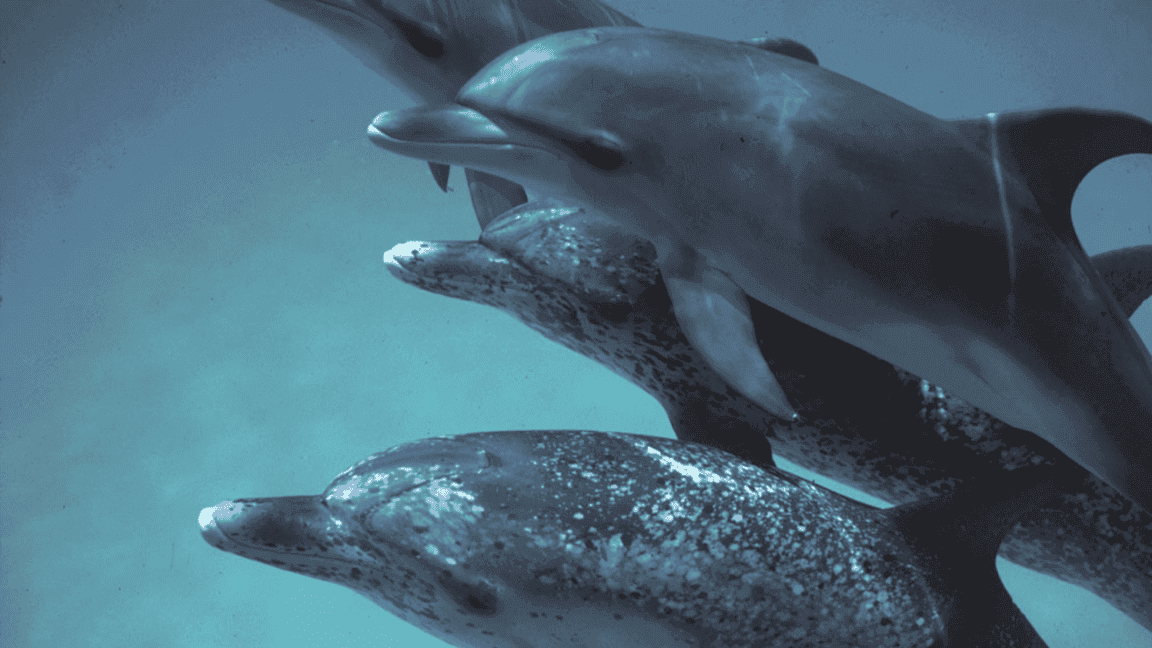AI Breakthroughs in Decoding Animal Communication: A Step Towards Interspecies Dialogue
2 Sources
2 Sources
[1]
AI could help us "translate" the language of animals - Softonic
The use of AI could expand the vocabularies we know of animals Shane Gero, a biologist specializing in cetaceans from Carleton University in Canada, has been researching whale communication for over 20 years. According to his work, sperm whales have specific sounds that identify their families and use "dialects" depending on their location. Although various species like dolphins, elephants, and birds also use patterned sounds to communicate, understanding these subtleties is a challenging task for humans. This is precisely where artificial intelligence comes into play, as it is capable of distinguishing these small variations. According to a recent article in Nature, in the past year, several AI-supported studies have revealed that African elephants and common marmosets assign names to their companions. Additionally, various machine learning tools are mapping the calls of crows, allowing for the exploration of animal self-awareness. Despite these advances, translating animal sounds remains a challenge of enormous proportions. "It is a big assumption to think that we can apply that technology to other species and obtain translations," explains David Gruber, founder of the CETI Project (Cetacean Translation Initiative), focused on the acoustic communication of sperm whales. Gero, with funding from the CETI Project, has collected data from more than 30 families of sperm whales in the Caribbean. These whales, which forage at depths of up to 2,000 meters, use sound clicks called "codas" to communicate. Each group, led by females, has unique diets, behaviors, and dialects. Differences in the rhythm of the codas create cultural boundaries between clans, according to Gero. Thanks to AI, analyzing these sounds has become more efficient, allowing for the identification of complete conversations and subtle variations like "rubatos" and "ornaments" (terms borrowed from music). In parallel, Mickey Pardo, a behavioral ecologist, has demonstrated that African elephants emit unique sounds that could be names. Using AI models, he discovered that these sounds have a 27.5% accuracy in identifying individuals. In similar experiments, neuroscientist David Omer found that tamarins from the same family share acoustic characteristics when "naming" each other. The aim of these studies is not only to understand these languages but also to expand animal vocabularies, such as location terms in elephants. AI tools are not only deciphering patterns but also illuminating the rich world of animal communication, with great potential to promote species conservation.
[2]
The Dr. Dolittle Dream Team: Can We Talk To Animals Using AI?
For centuries, humans have dreamt about talking to animals. From the tales of Dr. Dolittle to scientific studies on animal behavior, there has always been a desire to know what animals are saying. With advancements in AI, this may soon be the case. Researchers are now using AI to decode animal languages, which may allow for two-way communication between species. has revolutionized many fields, especially language translation and communication technologies. The techniques are applied to animal communication by scientists to understand how animals transmit messages through sounds, body language, and other signals. This means that artificial intelligence can pass through many volumes of data created by various species, which may be impossible for a human. The Earth Species Project (ESP) is the leading group conducting research in this area. Founded by and technologists, ESP aims to utilize machine learning to understand animal communication. Katie Zacarian, the CEO of ESP, stated, "We are on the verge of applying the advances we see in human language to animal communication." This progress could enable us to have genuine conversations with animals.
Share
Share
Copy Link
Recent AI-powered studies have made significant progress in understanding and translating animal communication, bringing us closer to the possibility of interspecies dialogue. This development has implications for conservation efforts and our understanding of animal cognition.

AI Advances in Decoding Animal Communication
Recent developments in artificial intelligence (AI) are bringing us closer to understanding and potentially "translating" animal communication. This breakthrough could revolutionize our interaction with various species and significantly impact conservation efforts.
Sperm Whale Communication Studies
Shane Gero, a cetacean biologist from Carleton University, has been studying whale communication for over two decades. His research reveals that sperm whales use specific sounds to identify their families and employ "dialects" based on their location
1
. The CETI Project (Cetacean Translation Initiative), founded by David Gruber, focuses on decoding the acoustic communication of sperm whales1
.AI's Role in Analyzing Animal Sounds
AI has proven instrumental in efficiently analyzing animal sounds, allowing researchers to identify complete conversations and subtle variations. Gero's work, funded by the CETI Project, has collected data from more than 30 sperm whale families in the Caribbean. These whales use sound clicks called "codas" to communicate, with each group having unique diets, behaviors, and dialects
1
.Expanding to Other Species
The application of AI in animal communication studies extends beyond whales:
-
African Elephants: Behavioral ecologist Mickey Pardo has demonstrated that African elephants emit unique sounds that could be names. AI models showed these sounds have a 27.5% accuracy in identifying individuals
1
. -
Common Marmosets: Neuroscientist David Omer found that tamarins from the same family share acoustic characteristics when "naming" each other
1
. -
Crows: Machine learning tools are mapping crow calls, potentially exploring animal self-awareness
1
.
The Earth Species Project
The Earth Species Project (ESP), founded by technologists, is at the forefront of this research. Using machine learning, ESP aims to understand animal communication across various species. Katie Zacarian, CEO of ESP, believes we are on the verge of applying human language advances to animal communication
2
.Related Stories
Challenges and Future Prospects
Despite these advancements, translating animal sounds remains a significant challenge. David Gruber cautions against assuming that technology developed for one species can be directly applied to others
1
. However, the potential of AI in this field is immense, not only for deciphering existing patterns but also for potentially expanding animal vocabularies.Implications for Conservation and Interspecies Communication
The ultimate goal of these studies goes beyond mere understanding. Researchers hope to use this knowledge to promote species conservation and potentially enable two-way communication between humans and animals
2
. This could lead to unprecedented insights into animal cognition and behavior, fundamentally changing our relationship with the natural world.References
Summarized by
Navi
[2]
Related Stories
Recent Highlights
1
Nvidia locks in $20 billion Groq deal, securing AI chip rival's technology and talent
Business and Economy

2
Geoffrey Hinton warns AI job replacement will accelerate in 2026 as systems gain new capabilities
Technology

3
Deepfakes cross indistinguishable threshold as voice cloning and video realism surge 900%
Technology








